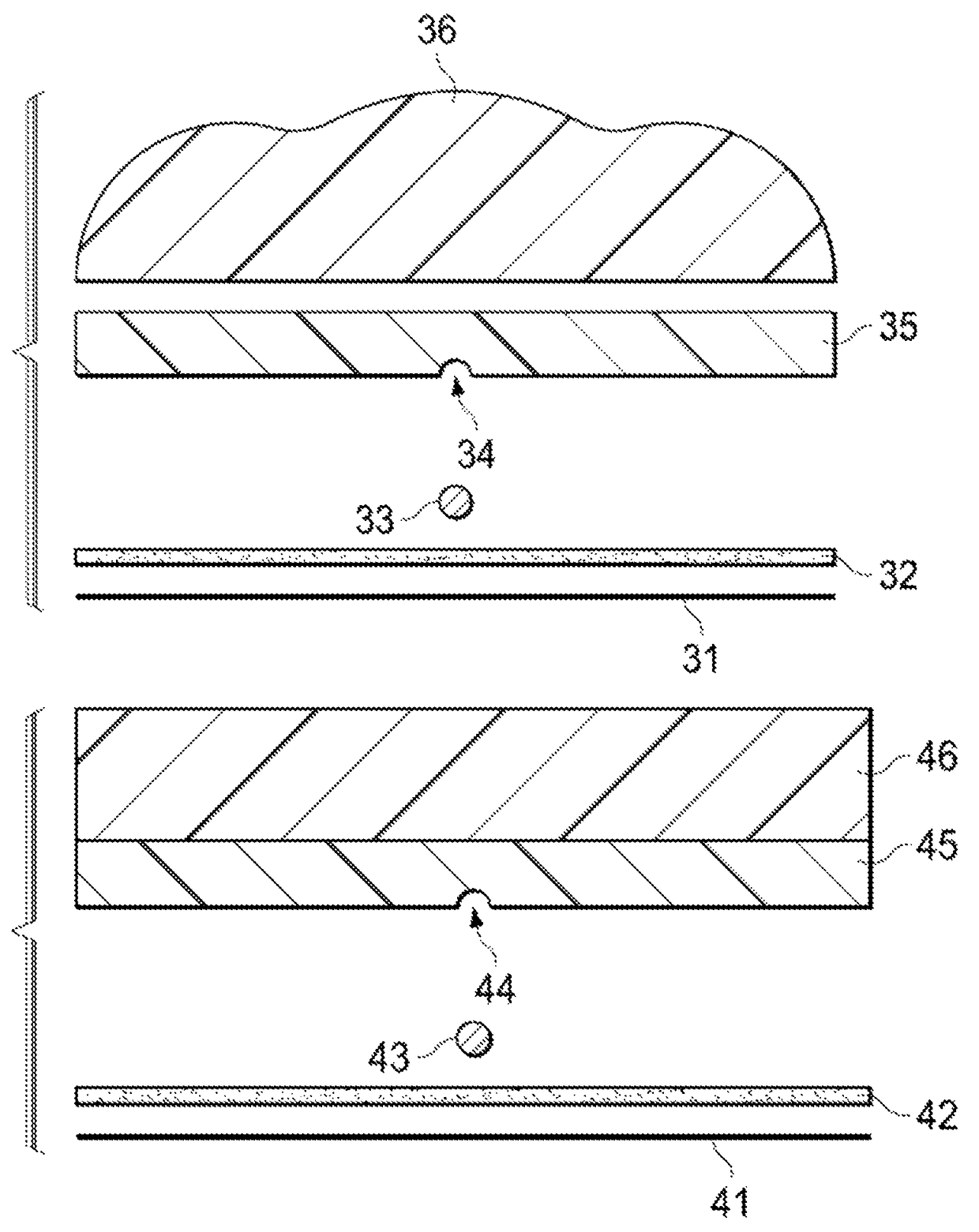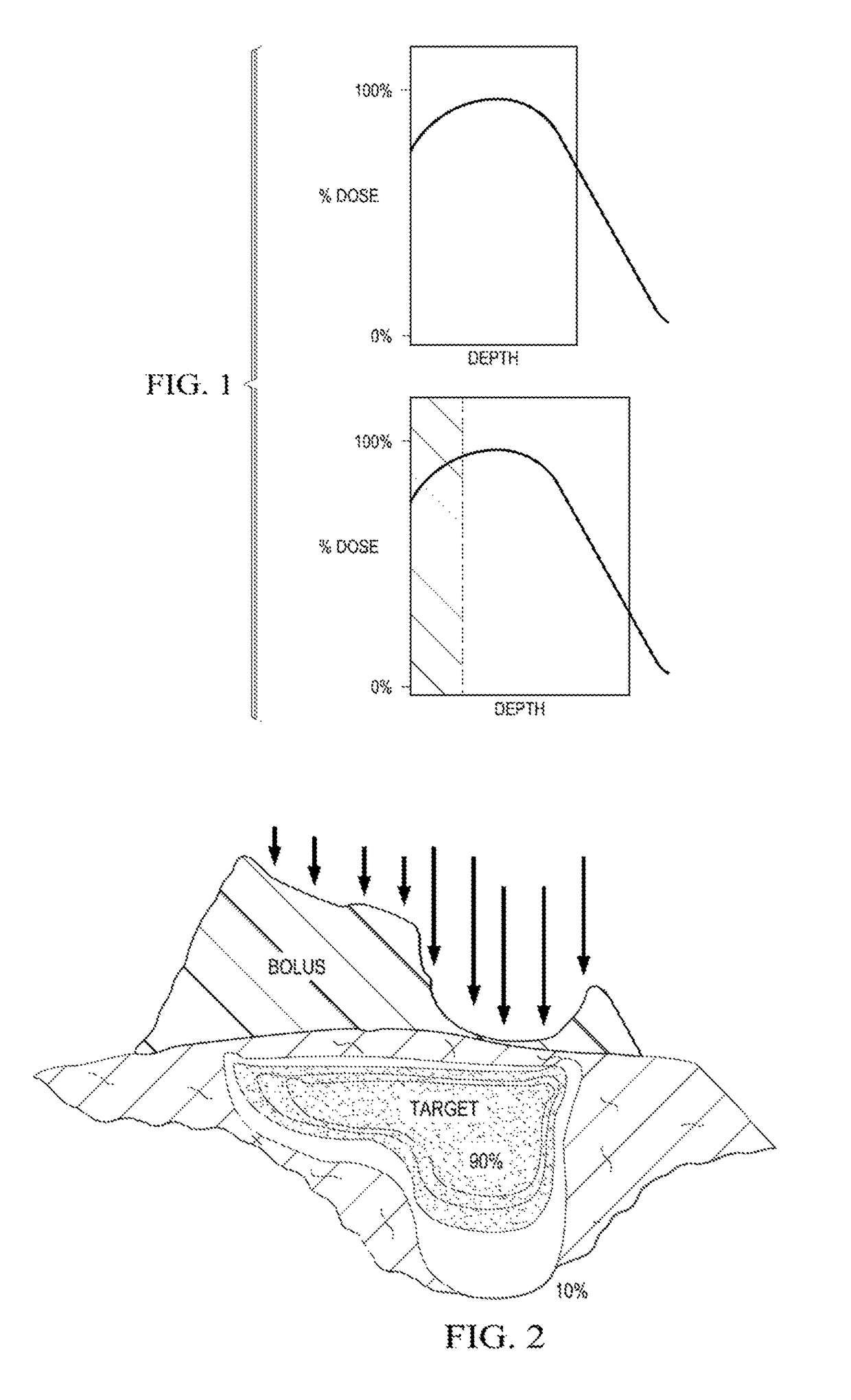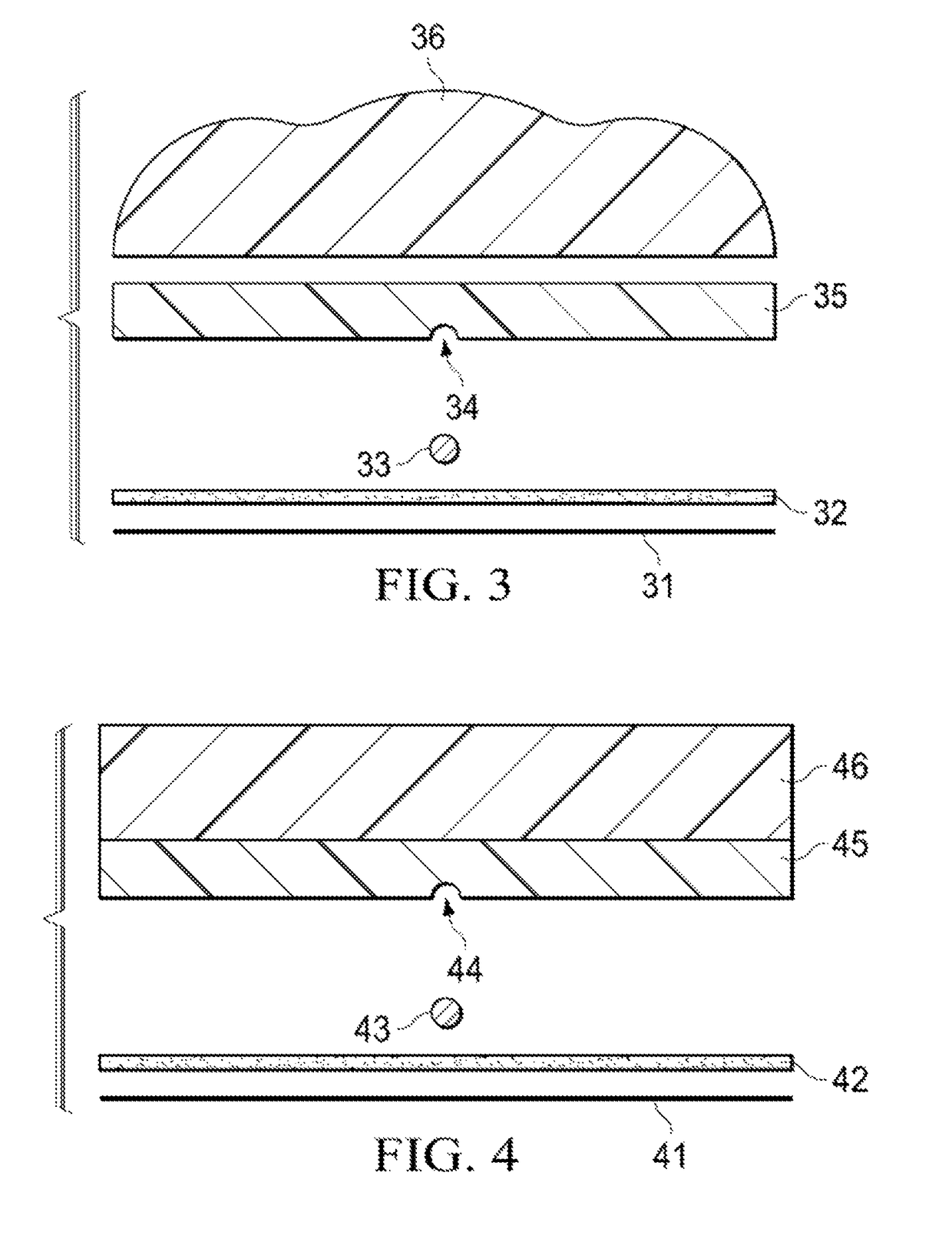Skin patch dosimeter
a dosimeter and patch technology, applied in the field of skin patch dosimeters, can solve the problems of limited use of radiation therapy in non-malignant conditions, potential for cancer, radiation-induced cancer risk, etc., and achieve the effects of not easily disturbed or reshaped, sufficient stiffness, and even or smooth dos
- Summary
- Abstract
- Description
- Claims
- Application Information
AI Technical Summary
Benefits of technology
Problems solved by technology
Method used
Image
Examples
Embodiment Construction
[0063]The following descriptions and figures are exemplary only and should not be used to unduly limit the scope of the invention.
[0064]Current skin sensor patches are made by sandwiching a sensor between two flat layers, and adding adhesive to the bottom surface for temporary attachment to the epidermis. However, such construction always leaves air pockets to each side of the sensor, which interferes with accurate dosing. Further, the larger the sensor, the greater the air gap. This interferes with accurate delivery of radiation, since radiation will travel faster through air.
[0065]The current invention provides a patch with a groove in the bottom surface for receiving the sensor and which eliminates the air pockets. In addition, the groove ensures accurate and reproducible placement of the sensor tip on the patch, thus simplifying manufacture and improving the reliability of the sensor.
[0066]If desired, the sensor can be sealed into the groove, e.g., with an adhesive or with a cov...
PUM
 Login to View More
Login to View More Abstract
Description
Claims
Application Information
 Login to View More
Login to View More - R&D
- Intellectual Property
- Life Sciences
- Materials
- Tech Scout
- Unparalleled Data Quality
- Higher Quality Content
- 60% Fewer Hallucinations
Browse by: Latest US Patents, China's latest patents, Technical Efficacy Thesaurus, Application Domain, Technology Topic, Popular Technical Reports.
© 2025 PatSnap. All rights reserved.Legal|Privacy policy|Modern Slavery Act Transparency Statement|Sitemap|About US| Contact US: help@patsnap.com



